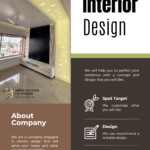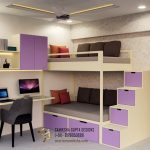Interior design is a field that combines creativity with technical expertise to create functional and aesthetically pleasing spaces. However, it comes with its challenges, many of which stem from managing client expectations and navigating the intricacies of design execution.
Here are some common challenges that interior design companies face, illustrated with personal experiences from my practice.
1. Misunderstanding the Purpose of 3D Renderings
One of the most frequent issues is clients’ misunderstanding of 3D renderings.
These digital images provide a general idea of the final space, not a replica. The colours and textures in 3D renderings can appear different in real life due to various factors such as lighting and material properties.
For example, I recently worked with a client who wanted to see multiple 3D renderings of the same kitchen with different laminate options.

Despite explaining that physical samples would offer a more accurate representation, the client insisted on seeing every possible variation digitally.

This process was time-consuming and often led to frustration when the final product didn’t match the client’s digital expectations precisely.
2. Time and Effort Wastage
Creating numerous 3D renderings for each material option not only consumes significant time but also diverts effort from more critical design tasks.
This inefficiency can slow down the overall project timeline and increase costs. Unfortunately, some clients do not understand this and persist in requesting detailed renderings for every option they consider.
3. Communication and Trust Issues
Effective communication and trust between the designer and the client are crucial for a successful project. However, when clients rely solely on 3D renderings and disregard physical samples, it creates barriers. This is one of the primary and most common challenges of interior design companies.
Physical samples provide a true sense of colour, texture, and quality, which digital images cannot fully capture. Building trust means clients need to rely on the designer’s expertise and recommendations, which ensures smoother execution and fewer surprises.
4. Managing Client Expectations
Educating clients about the design process and setting realistic expectations is essential but challenging.
Many clients come with preconceived notions influenced by TV shows or online images, which often depict idealized versions of design projects. Aligning these expectations with the realities of design work, including budget constraints and material limitations, is a constant struggle.
5. Escalations and Rework
When clients’ expectations are not met due to over-reliance on 3D renderings, it can lead to escalations and rework. This affects the project timeline, increases costs, and strains the relationship between the client and the designer.
For instance, revisiting designs and altering materials late in the project can disrupt schedules and add unnecessary complexity.
Conclusion
While 3D renderings are a valuable tool in interior design, they have limitations. Clients must understand these limitations and trust the designer’s professional judgment.
Physical samples should be the primary reference for material choices, as they provide the most accurate representation of the final product.
By fostering clear communication, managing expectations, and building trust, interior designers can navigate these challenges more effectively. This collaborative approach ensures that the design process is efficient and that the final spaces are both beautiful and functional.
#InteriorDesign #DesignChallenges #3DRendering #ClientCommunication #InteriorDecor #DesignProcess





